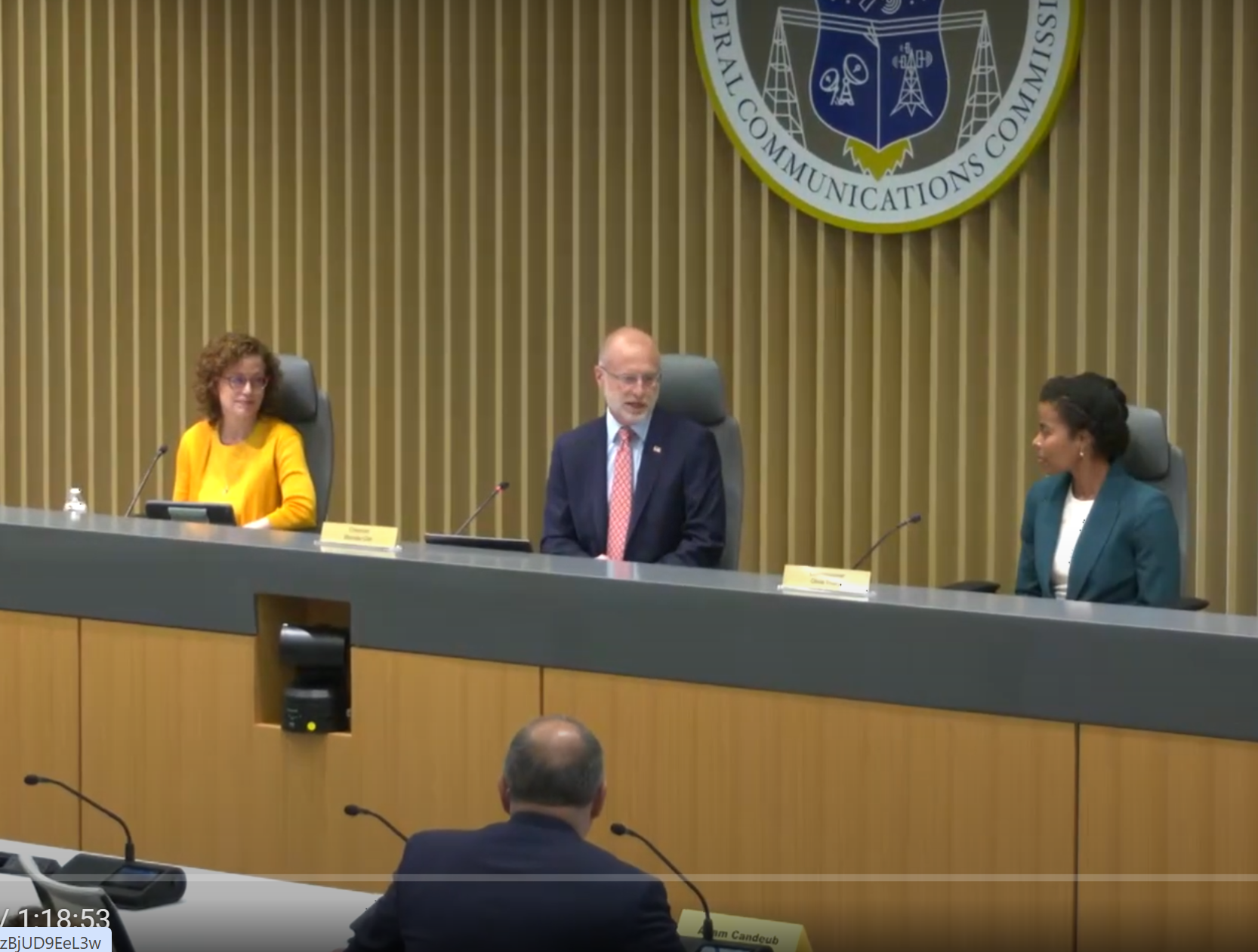Some Hope for Interference Issues

CHARLES W. RHODES The FCC has recently expressed concerns over how they will repack the UHF band after the spectrum auction now set for 2015. Their mandate from Congress is to protect broadcasters from co-channel interference (CCI) and from first-adjacent channel interference (ACI).
DTV broadcasters have never been protected from interference on what were called “UHF taboo” channels (channels N-8 to N-2 and channels N+2 to N+8 and also channels N+14, N+15. This is because although the FCC considered taboo channel relationships for interference into DTV, “the D/U [Desired to Undesired] ratios (approximately –60 dB) were such that they rarely if ever had an effect on the results, and the FCC rules adopted in the Sixth Report and Order do not require attention to UHF taboo interference to DTV stations,” according to FCC/OET Bulletin #69.
TABOO CHANNEL INTERFERENCE
I’ve researched the record that suggests that taboo channel interference to DTV reception would entail a D/U ratio for a receiver of –60 dB. At the Advanced Television Test Center (where I served as chief engineer), we measured the maximum undesired (U) signal power in channel N+2 when the desired (D) signal on channel N was –68 dBm. We found that the maximum U power for this prototype receiver (1995) for N+2 was –8.77 dBm, so the D/U for the prototype receiver was –59.13 dB. This is the only UHF taboo test that gave a specific D/U. The few other tests conducted support the notion that –60 dB D/U for this particular receiver was an appropriate choice if one assumes that receivers would be built to perform as well as did this prototype. The FCC rounded this to –60 dB.
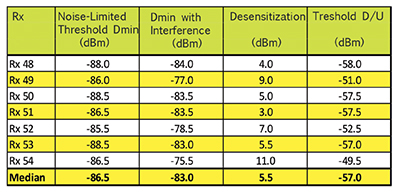
Fig. 1: One U signal two channels above the D signal and –26 dBm power to the receivers
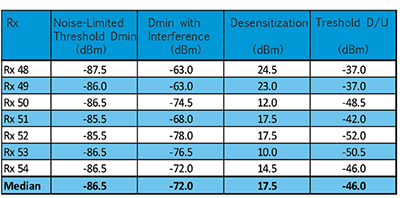
Fig. 2: Two U signals, two and four channels above the D signal, –26 dBm power each to the receivers Consumer receivers do not live up to the expectation created in the mind of the FCC by that prototype. Nevertheless, the commission may still believe that DTV receivers live up to its 1995 standard.
The FCC ran tests on receivers which were available in 2005–2006 (Table A-4 in the OET Report 07 TR-1003), and found that the worst receiver tested –28.1 dB for one U signal on channel N-2, and –42.3 dB for one U signal on channel N+2. The median receiver was –40.9 dB and the best receiver had a D/U of –49.7 dB. This should have sent a message, but it didn’t.
In December 2010, “IEEE Transactions on Broadcasting” published a paper reporting on tests conducted by the FCC on the RF performance of NTIA-approved ATSC converters. Some of these converters had a double conversion tuner (DCT) in the form of an IC built on a silicon chip. Most used conventional single conversion tuners (SCT), whose IF is the usual 44 MHz. These were built of discrete components.
The professional video industry's #1 source for news, trends and product and tech information. Sign up below.
The median SCT converter had a D/U of –49.5 dB and the median for DCT tuners was –48.4 dB. These D/U numbers are for one U signal on channel N-2. The best way to grasp what D/U means is to understand that a D/U of –49 dB means that if the U signal received power is 50 dB above the D signal power, reception fails. If the U signal is less than 48 dB stronger than the D signal, the receiver will work.
The above data is for a single U signal. That will often be the exception, not the rule, in many communities after re-packing.
INTERFERENCE FROM U SIGNALS ON CERTAIN CHANNEL PAIRS
The FCC tested and reported the effect of two U signals on channels of the N+K, N+2K form (the kind which may generate third order distortion products centered on channel N). The two most important of these toxic pairs of U channels are (N+2) and (N+2, N+4), and (N-2) and (N-2, N-4). These dump noise into channel N and into channel N+6 while the other pair dumps noise into channels N and N-6. I consider these to be the most toxic U channel pairs. The channel pairs (N+3) and (N+3, N+6) and (N-3) and (N-3, N-6) are slightly less toxic.
The FCC test results in 2010 for NTIA-approved converter boxes had a median D/U for the (N-2), (N-2, N-4) pair of –43.2 dB. For the N+2, N+4 pair, the median U was –47.6 dB. These are both a long way from –60 dB.
As these are medians, it means that 50 percent of these receivers worked at the stated D/U and 50 percent didn’t.
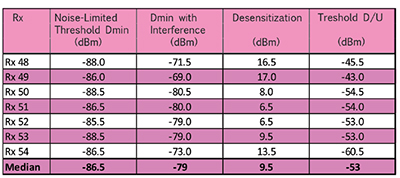
Fig. 3: Two U signals two and five channels above the D signal and –26 dBm, power each to the receiver (N+K, N+2K + 1). This test was run on receivers 48–54 only.
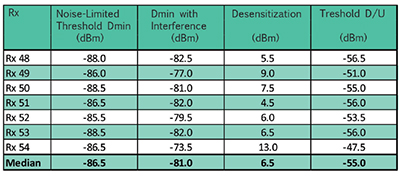
Fig. 4: Two U signals two and six channels above the D signal, each is –26 dBm power to each receiver (N+K, N+2K + 2) The most amazing finding from the FCC tests of converter boxes is the number of such toxic channel pairs there are. The FCC tested with K +/– 2, 3, 5, and 10, so the toxic pairs included (N+2, N+4), (N+3, N+6), (N+4, N+8), (N+5, N+10), and (N+10, N+20). I was amazed that a U signal 20 channels from the D signal would have any effect at all, but it did. However we won’t have 40 channels in the UHF band after repacking, as we only have 37 now. Our problems lie with N+/–2 and 4, N+/–3 and 6, N+/–4 and 8 and N+/–5, and 10 in descending order of toxicity.
TEST RESULTS WITH 24 CURRENT ATSC RECEIVERS
My colleague, Linley Gumm and I have designed, built, and operated an RF test bed that can measure the receiver noise-limited sensitivity of NTIA-approved ATSC converters and receivers and their robustness to interference. We have 26 ATSC converters and 21 DTV modern receivers (2012 and 2013 models) in this laboratory.
Linley and I tested 24 of these NTIA-approved converters models and found that the median D/U for one U on channel N+2 was –59 dB while for two U on channels N+2 and N+4, the median D/U was –47 dB.
These tests involved no double conversion tuners as most tuners were implemented as a tuner-on-a-chip. They were single conversion tuners, but with a much lower IF frequency than we had in the single conversion converter boxes, so they could be expected to act differently.
For one U on channel N+2, the median D/U was –53 dB (see Fig. 1). For two U signals on N+2 and N+4, the median D/U was –44 dB as shown in Fig. 2.
We also ran tests on seven modern receivers for two U signals on channels N+2 and N+5 (see Fig. 3). For these, the median D/U was –53 dB, somewhat better than the really toxic pair N+2, N+4, but worse than for a single U (N+2) in Fig. 1. We then tested with a pair of U signals on channels N+2, N+6 shown (Fig. 4). In this test, the median D/U was –55 dB, so we now know that while channel pairs of the N+K, N+2K kind are the most toxic, other combinations are also more toxic than is the case for a single U signal. We did not test N+2, N+3, or N+2, N+7, but I expect them to be similar to N+2, N+5. I expect N+7 to be similar to N+6, but that remains to be proven. We did not test with the U channels below the D channel for lack of costly additional filters, but I believe they would behave about the same as the channel pairs we did test.
CONCLUSION
Repacking is going to increase interference because there will more transmitters per channel. In my opinion, displaced stations will be allocated a channel in the lower portion of the UHF band. Most of these stations will then be on a channel having a taboo relationship to other stations in the UHF band.
If the FCC auction comes up with very few channels being volunteered, the increase in interference will be mild, but if lots of channels are volunteered for repacking they may create so much interference that broadcasters face a major problem.
But there is a way out. Interference only results where there is a large difference between received signal powers (high negative D/U), higher than the median D/U of receivers. Many communities already have their UHF transmitters colocated on one antenna farm; these communities may see no increase in interference. Other communities have UHF transmitters distributed all over town and broadcasters serving such communities are more likely to experience interference.
If broadcasters centralize their transmitters they could eliminate this interference. The strategy to minimize interference is to reduce the variance of field strengths between stations to lower the D/U numbers for field strength towards 0 dB. But there is nothing wrong with smaller differences between field strengths of say, 25 dB. In fact, the FCC rule for adjacent channel pairs is a D/U of –27 dB (average of Repacking is going to increase interference because there will more transmitters per channel. (–26 and – 28 dB). True, some stations on adjacent pairs of channel are not co-sited and they are certainly getting by. There could be two antenna farms serving the same community if they are within a few miles of each other.
So, there is light at the end of the tunnel, and it is not a locomotive. However, this “light” will come with a price tag attached.
Stay tuned.
Charles Rhodes is a consultant in the field of television broadcast technologies and planning. He can be reached via email atcwr@bootit.com.
